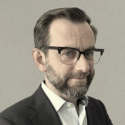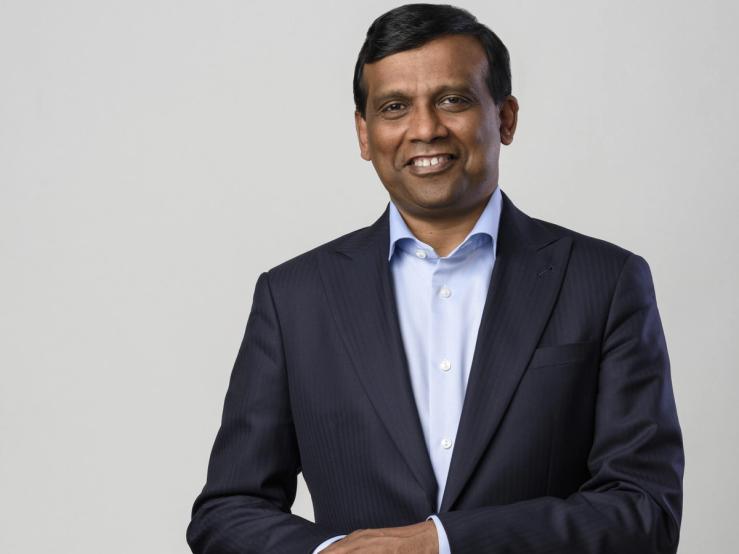The Scene
As CEO of Cognizant, one of the world’s largest IT services providers, Ravi Kumar S expects artificial intelligence to open up a bigger market than his company has ever accessed before, as his clients seek help integrating the technology into their operations. At the same time, he expects AI to have profound implications for the 350,000 people he employs, and for who he decides to hire in the future.
Kumar, who was president of Infosys from 2016 to 2022, joined Cognizant as CEO in early 2023, putting him in competition with his former firm and other global giants such as Accenture and Tata Consultancy Services. In March, after returning the company to revenue growth and simplifying its operations, he told investors that his $40 billion firm was well-placed to capture outsized growth and enter its expanding industry’s “winner’s circle.” To get there, Cognizant is training its own developers on new AI tools — while funding a global initiative that aims to teach 1 million people to use generative AI and other cutting-edge technologies by 2026.
Kumar, who started his career as a nuclear scientist in India, is a believer in the Jevons paradox — that when something becomes more efficient, we will use more of it, not less. In an interview in a New York office filled with business books and cricket memorabilia, he explained how he sees that theory playing out in his “big small company,” and in a labor market that stands to be transformed by AI.
This interview has been condensed and edited for clarity.
The View From RAVI KUMAR S
Andrew Edgecliffe-Johnson: How do you change culture in an organization of 350,000 employees?
Ravi Kumar S: Embedding a commonality of purpose top-down is a flawed approach to scaled organizations like ours. In our organizations, people thrive on breakthrough aspirations. They love the fact that we want to be in the winner’s circle. But every time a CEO talks to somebody at the bottom of the pyramid, the person at the bottom of the pyramid is saying, ‘Wait a minute, should I trust this person?’ The way to build that is to pick the influential layer at the middle of the pyramid and use them to be your voice. We have 8,000 to 9,000 people who walk the corridors every day, who talk to our associates every day. You have to get them first on your side, use them to be your voice, and then follow through with action and outcomes which employees can see.
What does that mean as AI transforms your industry?
Seeing what is coming is easy from the vantage position I am in. I meet policymakers. I meet clients, I meet [people in] academia, so I can connect the dots and see what is coming. The bigger virtue is to make everybody believe what is coming, because they’re not seeing what is coming. For the first time, a technology is not just disrupting blue-collar jobs, it’s disrupting white-collar jobs, and it is coming at an extraordinary pace. It’s a tsunami on the way, but your employees are not seeing it, so they’re not willing to believe what you’re saying. But once you build the trust, then they’re actually seeing it through your lens.
Already, 22% of our code is written by machines, and I think that number is going to skyrocket. So here is what our employees are thinking: First, they’re wondering, is it coming at that pace? Yes, and I’m telling them, this is a hockey stick. It’s 22% today; it’ll probably be 50% in the next 12 months. And then the second thing they’re thinking is, what’s going to happen to my job?
Would you still need 350,000 employees in that scenario?
I would. A portion of our cannibalization of our own selves will get addressed by the more-for-less paradox, and a large portion of the cannibalization will be addressed by the extraordinary growth which will come because my total addressable spend will change.
The technologies of the past wanted to replace humans. With AI, you equip the human with the tooling so that their productivity is high. And if productivity is high, wages are going to go up. I’m not freeing up those people and telling them you don’t have a job. I’m telling them, ‘You can create more output. And because you can create more output, you’re more productive. Your wages can go up if you use more AI tooling.’
[But] we want to open it to new labor pools, which means we don’t need 350,000 engineers. We potentially need liberal arts graduates. Expertise is going to be [at] your fingertips, so specialists will get a little deflated, but you’re going to see a premium at the intersection of computing skills and a particular domain.
You’ve invested heavily in upskilling. Is it against that context of thinking about how AI will change the skills you need in the business?
Absolutely. We were historically a STEM company, but our future is going to be a combination of STEM and non-STEM skills. We have an initiative called Synapse, where we want to train a million people on Gen AI, not just employees of our company, but in the communities we serve, because if the communities are rich enough on AI, it kind of rubs off on you. Technology in the past was first rolled over to governments, then to big businesses, then to small businesses, then to consumers. With AI, the flip has happened.
What did you learn from being a nuclear scientist?
The scientific approach to businesses is a huge blessing. The ability to build a thesis, validate a thesis, iterate the thesis, and build a new hypothesis, I think, is a fascinating grounding. I also have this unique draw from the job where you build your decision support on a combination of gut, data and gut: For the first 20% to 30% you run on gut because you have a curious mind and you’re asking questions; and the next 40% you layer it with data; and then you double down on gut again because you don’t want to miss the bus. Science is a very curious discipline, so it helps you to stay curious and hungry.


